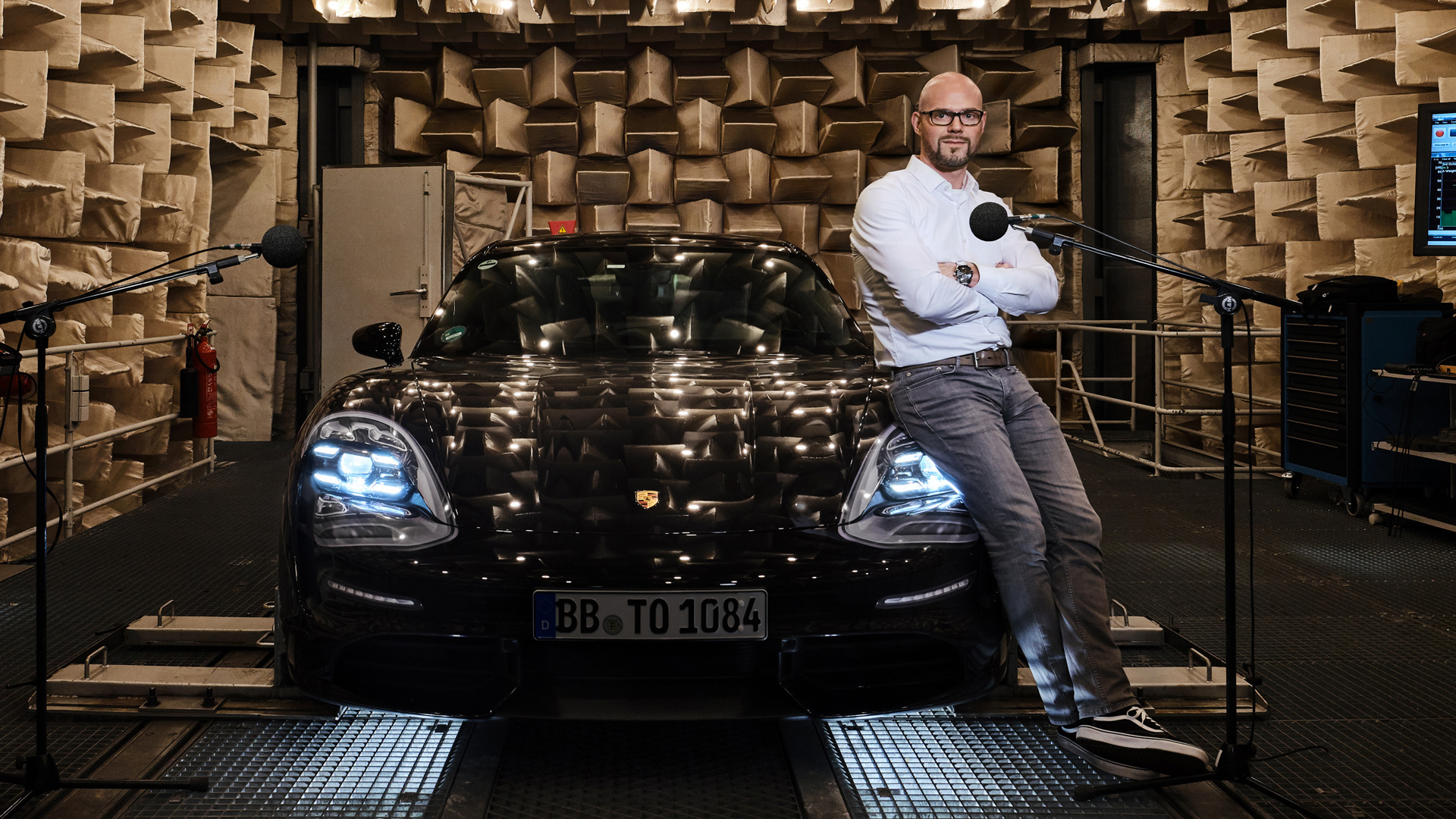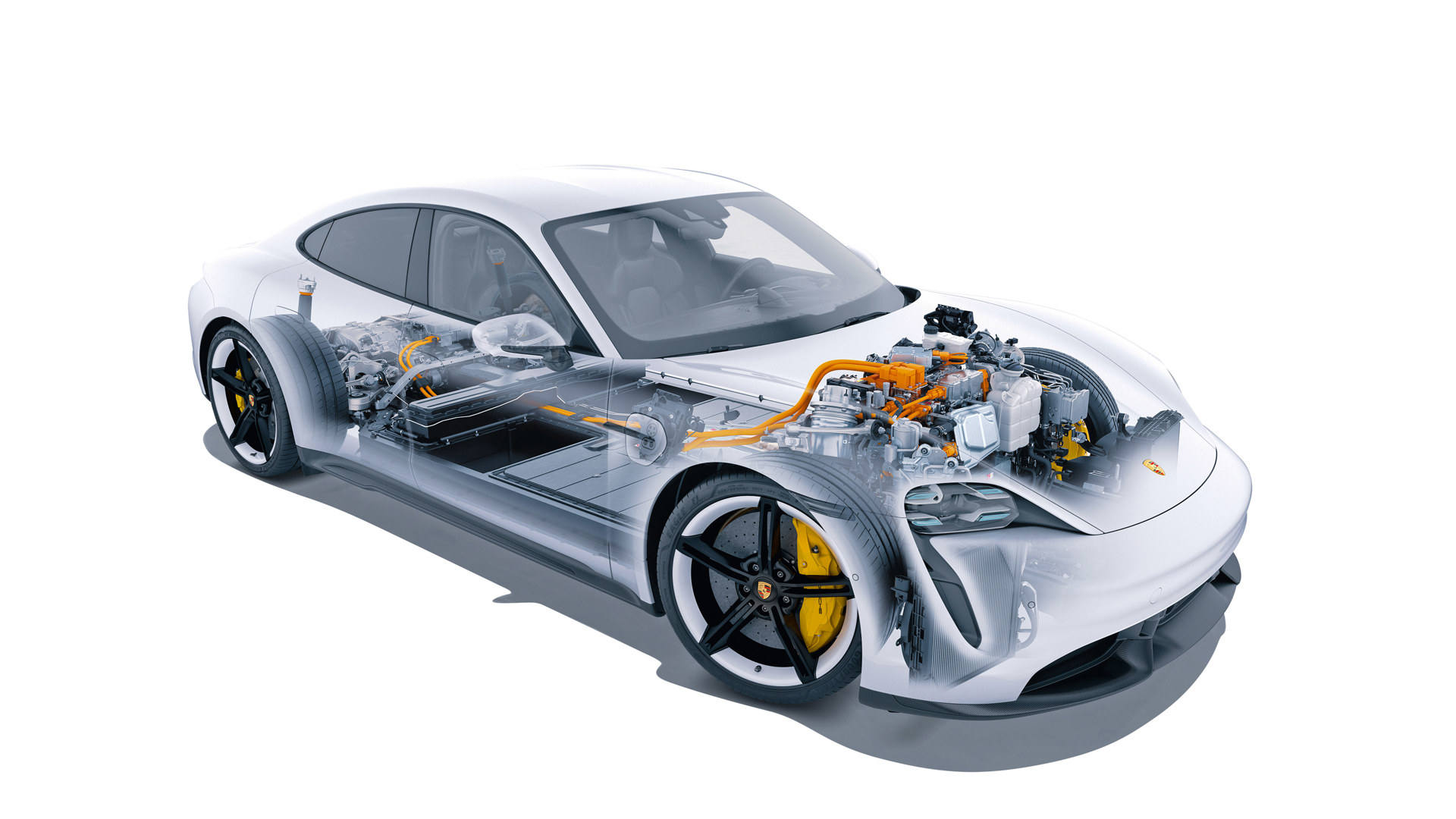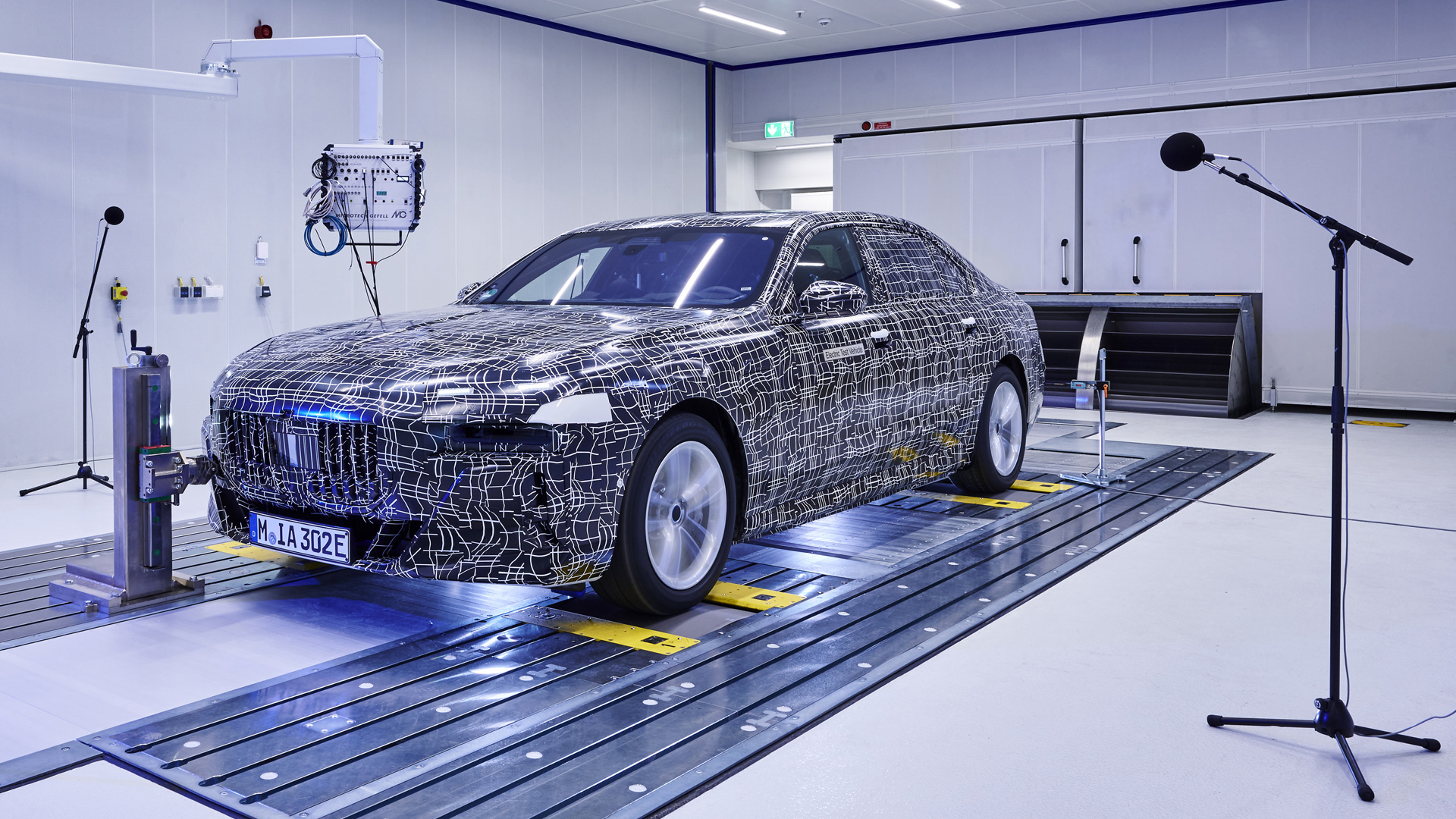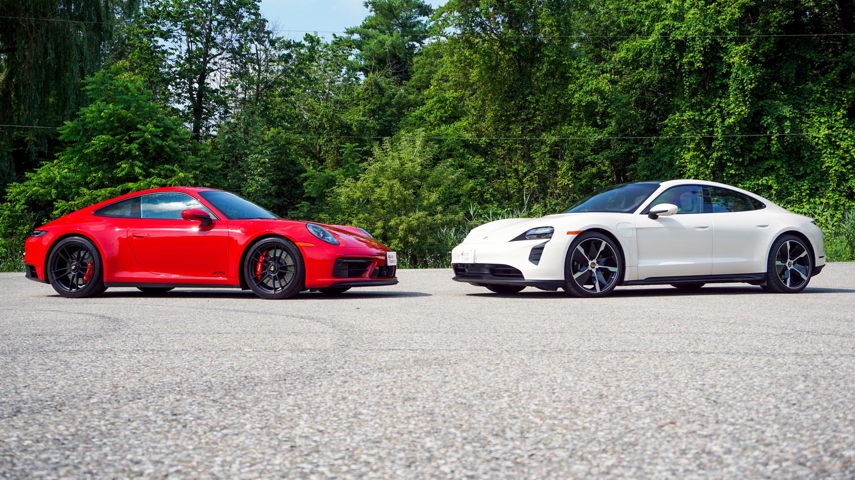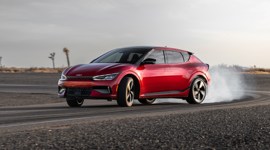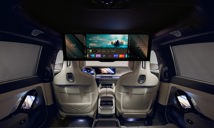Without the grumble of a V8, the fizz of a high-revving six-cylinder, or the whoosh of a turbocharged four-banger, drivers still expect to hear something when hitting the accelerator, even in an electric vehicle. As gasoline-engine performance cars are getting quieter, automakers have been adding synthetic engine sounds for years — the Acura TLX, Ford Mustang, and Honda Civic Type R come to mind. But fake noise is also embedded into EVs, producing mechanical propulsion sounds both inside the car and out.
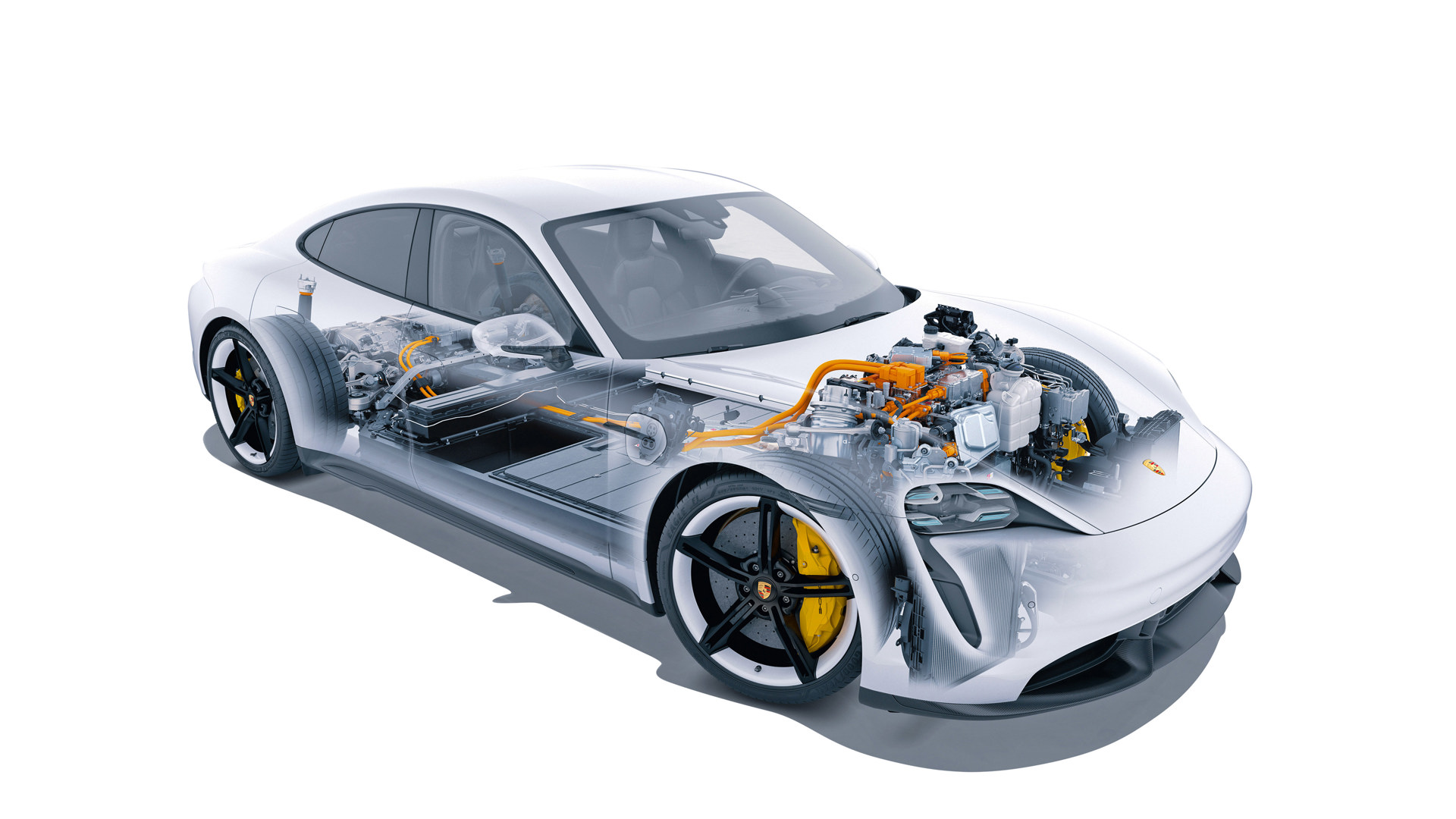
Why Do EVs Need a “Fake” Engine Noise?
Fake or synthetic engine noises are pre-recorded soundtracks played through a vehicle's speakers, inside and outside of the car. While one of the main appeals for new EV owners is the lack of engine noise, it's imperative for safety reasons for nearby pedestrians or bicyclists to hear an oncoming EV.
Since 2019 in Europe and 2022 in Canada, government regulations have demanded EVs produce a synthetic whirring sound when driving at slow speeds. Fake engine noise can also counter the sound of an EV's climate-control fans and tires.
Driving an EV without sound is "all well and good, but acoustic feedback is part of the driving experience," according to Tobias Hillers, Section Head of Active Sound Design at the Porsche Development Center in Weissach, Germany.
"Sound is a fundamental part of the emotional driving experience in a BMW," agrees Adrian van Hooydonk, Head of BMW Group Design. A collaboration between BMW and Grammy and Academy Award-winning film score composer Hans Zimmer is behind the fake engine sounds that can be heard in the all-electric BMW i4, iX, and the forthcoming new i5 and i7 models. Marketed as "BMW IconicSounds Electric," BMW says the new sounds "reflect the specific performance characteristics of an electrified BMW in a completely new way."
![]()
The Noise Maybe Be Fake, but the Experience Needs to Sound Real
Starting in 2012, Hillers and his Sound and Concepts team at Porsche has led the development of what is now known as the "Porsche Electric Sport Sound," which debuted on the Mission E concept in 2015 and with the German automaker's first battery-electric production vehicle, the 2020 Taycan. The sound mimics a sort of sci-fi spaceship-like woosh that gets louder the harder the accelerator is pressed.
The Porsche Electric Sport Sound was developed in the studio, on the road, and at the race track with Porsche's 919 Hybrid Le Mans racecar.
“We once spent three weeks at Porsche's Nardò Technical Centre in Italy creating sounds and trying them out on the test tracks there," explains Hillers.
For Hillers, the biggest challenge was making a new sound appropriate for a new type of Porsche. Like iconic gas-powered Porsches, such as the 356 and 911, the Taycan provides the driver with clear feedback that also enhances how engaged a driver can feel with it. Hillers needed to create some authentic sounds, not just sounds designed in the studio.
"If you hear the 919 Hybrid, which has an internal combustion engine in the back and the enormous boost of the electric motor at the front axle, the powertrain makes low frequencies to very high frequencies with no gear shifts in between," says Hillers.
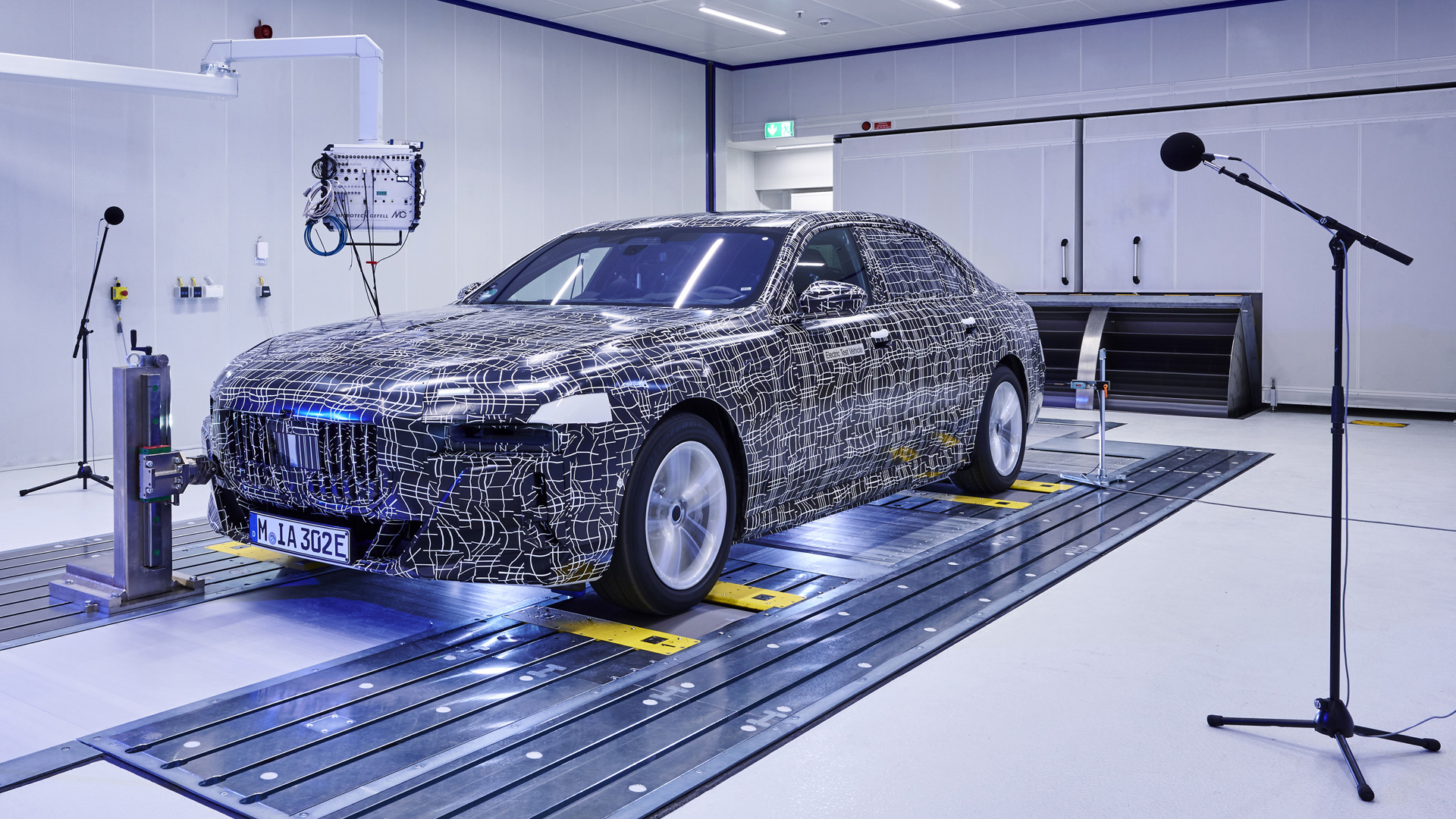
When It Comes to Composing Fake EV Sounds, the Beat Goes On
While Porsche’s Taycan has now been on sale for a few years, Hillers' team is still hard at work, preparing for the next wave of all-electric Porsches. And each new Porsche EV will get its own synthetic acoustic signature.
"I remember a quote from Ferdinand Porsche,” says Hillers. “He couldn't find the car he wanted to have, so he built his own. Like our approach with sound, if we can’t find what we want, we create the software and techniques on our own."
